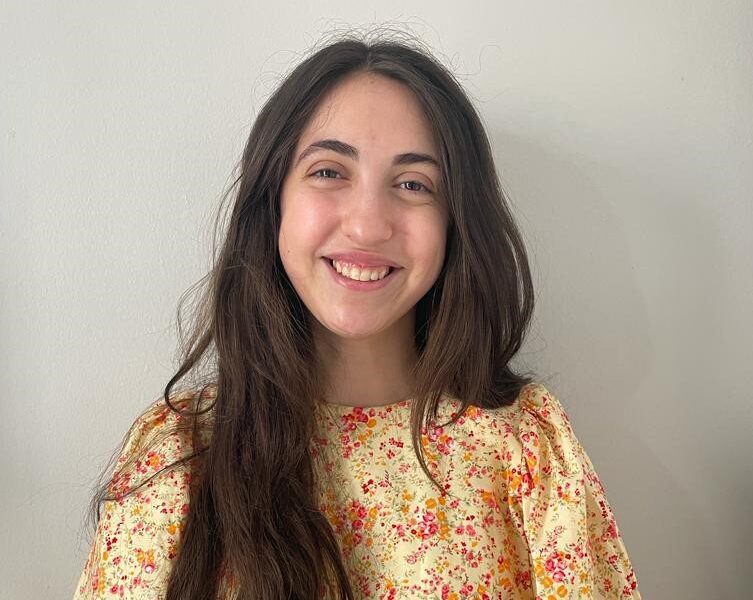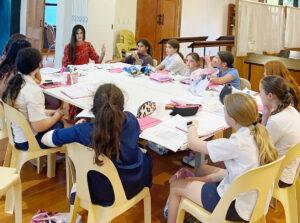OpEds
Time to take women’s Torah study seriously

If you could go back in time to anywhere in history and just observe, where would you go?
I’ve thought unusually long and hard about this question. A Shakespeare play at the Globe in London in the 1500s (preferably The Merchant of Venice), or the Martin Luther King Junior-led March on Washington in 1963 are typically my top contenders. But, if the opportunity really arose, I know what I would do: I would go back to the Hebrew year 2448 (1312 BCE), to the 6th (or 5th – because there’s an argument in the Gemara about the actual date of the event) of Sivan. I would go back to Matan Torah (the Giving of the Torah).
Out of all the weird, wacky, and puzzling biblical scenes, Matan Torah has always bothered me the most. What does it mean when the Midrash (Biblical Exegesis) says that Israel saw the thunder and heard the lightening? What did Matan Torah look like: what does it mean, really mean, to “see” G-d?
And, if I went back in time, I would finally understand this verse, and Rashi’s explanation of it. In the chapter before the Ten Commandments are spelled out, the Torah explains that,
Umosheh alah el-ha’elohim vayyikra elav adonai min-hahar lemor koh tomar leveit ya’akov vetaggeid livnei yisra’el.
(And Moses went up to G-d. יהוה called to him from the mountain, saying, “Thus shall you say to the house of Jacob and declare to the children of Israel…”)
The verse is tautological. “Say to the house of Jacob” is surely no different from “declare to the children of Israel”. The Torah, famously, doesn’t waste words. Rashi, the great medieval commentator explains the difference: “House of Jacob” is the women, whereas “children of Israel” are the men. “Say” is a verb connoting speaking soft, gentle words, whereas “declare” suggests harshness. According to Rashi, Moses is receiving two instructions here: first, explain to the women – gently, sweetly, and kindly, and then, give the tough, “real”, version to the “tough” men.
I’m surely not the only one who has felt deeply uncomfortable with Rashi’s explanation. It comes across as enforcing rigid, problematic, and stereotypical notions about men and women’s intellectual abilities and educational standards. These ideas are disappointingly common in rabbinic literature. The Gemara, famously, brings the opinion of Rabbi Eliezer that “anyone who teaches his daughter Torah, it is as if he is teaching her tiflut [commonly translated as promiscuity].” Rabbi Eliezer links two clichés: women aren’t smart, and women are promiscuous. Torah, Rabbi Eliezer argues, which normally increases wisdom, will only make women – flawed, promiscuity-prone vessels – lewder.
As the centuries progress, the attitude in rabbinic circles towards women and Torah study begins to shift – slowly. Rabbinic writing from the 12th and 13th centuries gives women permission to study “relevant topics” i.e. Torah topics that are necessary for their daily Jewish observance (see, for example, the Sefer Chassidim). Rav Samson Raphael Hirsch, writing in the 1800s, expands this, explaining that even seemingly irrelevant, “theoretical” Torah sections should be learned by women, because ultimately it increases fear of G-d, and motivates women to keep following Jewish law.
What’s starkly absent for centuries, however, is the recognition that women should be allowed to learn Torah because women, like men, are capable, intelligent, thinking beings.
The attitude towards women’s study in the Jewish world, of course, mirrored that of the secular world. Medieval times offered nunneries as the only place for women to receive an education. (Here’s another link between a women’s chastity and her intelligence. Perhaps medieval authorities thought along the same lines as Rabbi Eliezer: the only safe space for semi-educated women were nunneries, somewhere where their education-induced lewdness could be kept in check. Later, upper-class women were educated by private tutors.)
Bias against women’s intelligence abounded, even as women achieved success: famous female authors from this time – the Brontë sisters, Louisa May Alcott, George Eliot – all published under male names, using the cover of maleness to write about “unladylike topics”, and to be taken seriously doing so.
Rashi’s explanation seems to entrench what women have been trying to overcome for centuries: the dichotomy of frivolous, gentle, and unintelligent women, versus serious, smart, tough men.
I want to try proposing a different reading of Rashi, loosely based on the Gur Aryeh, a super-commentator. The Gur Aryeh explains that G-d’s commandment was gendered because men and women need to be taught differently, each according to a way that’s fitting. The Gur Aryeh reasons that women are easily manipulated (see Eve, he says), and easily frightened, so it’s best to be gentle. Leaving aside the Gur Aryeh’s explanation, I want to expand upon his premise. There is something radical here – in the Rashi, and in the Torah: different groups of people have different needs, and properly equal education needs to attend to those specific needs.

Rebbetzin Estee Stern teaching Bat Mitzvah girls at Sydenham Shul
I’m in the middle of a wonderful book, Invisible Women by Caroline Criado Perez. The basic argument of the book is that the world is designed for men: everything from the size of cellphones, to safety mechanisms in cars, are based on data that is male-specific. Women are invisible: we’re not factored into the basic design structures of our day-to-day world. The Torah, however, in 1312 wasn’t doing that. The Torah was advocating that we give each group that which is appropriate, that which is best suited for it.
Torah teaching that is appropriate for women has, thankfully, changed from the days of Rashi and the Gur Aryeh. Nonetheless, with Shavuot rolling around, it would do us well to consider the question: what should Shavuot look like for a group of women in 5783? What is today’s equivalent of “say” to the “house of Jacob”?
To be sure, you would need to ask women. It may look something like organising specific talks for women about topics women are interested in. It may look like organising security to watch women and girls walk home during the course of the long Tikkun Leil night. It may look like having child-care options for some of the evening programming, or repeating specific programmes the next day so mothers aren’t disadvantaged and excluded. It looks like designing programming – for this day in particular, but really for all of Torah education – with the understanding that women and girls are serious, smart, tough, and deserve to learn.
- Jessica Goldblatt is an English literature Masters student with a passion for Jewish education and social justice.